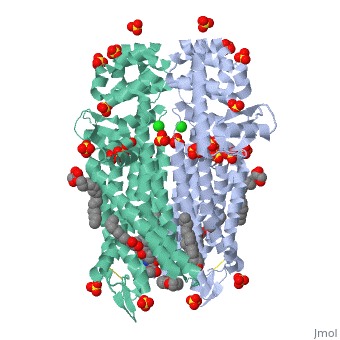See also Types of ligands and Signal transduction.
Ligands that bind to a receptor but fail to activate the physiological response are receptor antagonists.
Competitive antagonists bind to receptors at the same binding site (active site) as the endogenous ligand or agonist, but without activating the receptor. Agonists and antagonists "compete" for the same binding site on the receptor. Naloxone (also known as Narcan) is used to reverse opioid overdose caused by drugs such as heroin or morphine (μ Opioid Receptors).
- participates directly in agonist/competitive antagonist binding, affects activation gating, and is the portion that forms the 'middle' layer.
- in the structure of Glutamate receptor (GluA2).
- The small molecule [1], was studied as a treatment for stroke because it had demonstrated neuroprotective efficacy in experimental models of stroke and tolerability in healthy volunteers; however, in a multicenter, double-blind, randomized, placebo-controlled phase II trial, it was found to have significant sedative effects in patients with acute stroke which precludes its further development as a neuroprotective agent[2].
Physiological antagonists, substances that have opposing physiological actions, but act at different receptors. For example, histamine lowers arterial pressure through vasodilation at the histamine H1 receptor, while adrenaline raises arterial pressure through vasoconstriction mediated by alpha-adrenergic receptor activation.

